
Parma: Italy's Hidden Gem of Art, Culture, and Cuisine
Discover Parma, Italy's hidden gem where Renaissance art, rich musical heritage, and world-famous cuisine create an unforgettable blend of culture and flavor.
Parma, nestled in the heart of Italy's Emilia-Romagna region, is a city that seamlessly blends rich history, vibrant culture, and mouth-watering cuisine. Known for its Renaissance architecture, Parma is a treasure trove for art lovers. The Parma Cathedral and the Baptistery, with their stunning frescoes and intricate designs, are must-see landmarks that tell the story of the city's illustrious past. Beyond its historical allure, Parma is also a city of music. It is the birthplace of the renowned composer Giuseppe Verdi and home to the Teatro Regio, one of the most prestigious opera houses in Italy. Music enthusiasts will find themselves enchanted by the city's operatic heritage and vibrant cultural scene. Food lovers will find Parma to be a culinary paradise. Famous for its Parmesan cheese and Parma ham, the city's gastronomic delights are a testament to its rich culinary traditions. Stroll through the bustling markets, savor the local delicacies, and indulge in the authentic flavors that make Parma a true food lover's haven. Whether you're an art aficionado, a music enthusiast, or a foodie, Parma offers a unique and memorable experience that captures the essence of Italian charm and sophistication.
Local tips in Parma
- Visit the Parma Cathedral and Baptistery early in the morning to avoid crowds and enjoy the tranquility.
- Try the local specialties like Parmesan cheese and Parma ham at Mercato Albinelli for an authentic taste of Parma.
- Book tickets in advance for performances at Teatro Regio, especially during the Verdi Festival.
- Explore the city's museums, such as the National Gallery and the Glauco Lombardi Museum, to delve deeper into Parma's artistic and historical heritage.
- Rent a bike to tour the city and its picturesque surroundings. It's a great way to explore at your own pace.
Parma: Italy's Hidden Gem of Art, Culture, and Cuisine
Parma, nestled in the heart of Italy's Emilia-Romagna region, is a city that seamlessly blends rich history, vibrant culture, and mouth-watering cuisine. Known for its Renaissance architecture, Parma is a treasure trove for art lovers. The Parma Cathedral and the Baptistery, with their stunning frescoes and intricate designs, are must-see landmarks that tell the story of the city's illustrious past. Beyond its historical allure, Parma is also a city of music. It is the birthplace of the renowned composer Giuseppe Verdi and home to the Teatro Regio, one of the most prestigious opera houses in Italy. Music enthusiasts will find themselves enchanted by the city's operatic heritage and vibrant cultural scene. Food lovers will find Parma to be a culinary paradise. Famous for its Parmesan cheese and Parma ham, the city's gastronomic delights are a testament to its rich culinary traditions. Stroll through the bustling markets, savor the local delicacies, and indulge in the authentic flavors that make Parma a true food lover's haven. Whether you're an art aficionado, a music enthusiast, or a foodie, Parma offers a unique and memorable experience that captures the essence of Italian charm and sophistication.
When is the best time to go to Parma?
Iconic landmarks you can’t miss
Cattedrale di Parma
Explore the breathtaking Cattedrale di Parma, a masterpiece of Romanesque architecture and vibrant cultural heritage in the heart of Italy.

Rocca Sanvitale
Explore the enchanting Rocca Sanvitale, a medieval castle in Fontanellato, offering rich history, stunning architecture, and captivating art exhibitions.
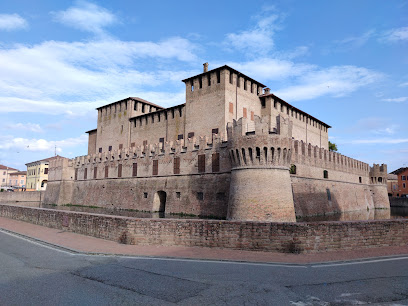
Fiere di Parma
Explore Fiere di Parma, Italy's premier event venue, where culture, commerce, and creativity converge in a vibrant atmosphere.
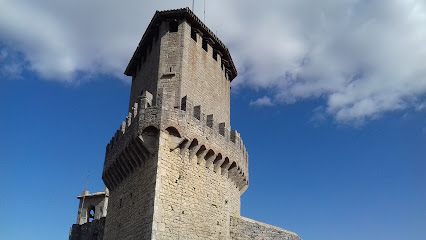
Castle of Torrechiara
Explore the enchanting Castle of Torrechiara, a stunning medieval fortress with breathtaking views and rich history in the heart of Emilia-Romagna.
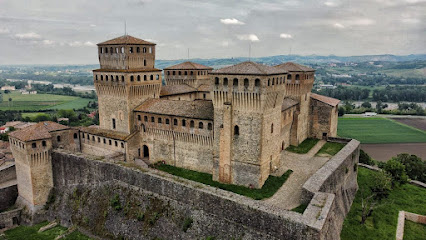
Labirinto della Masone
Explore the world's largest labyrinth at Labirinto della Masone, an extraordinary open-air museum blending art, nature, and culture in Fontanellato, Italy.
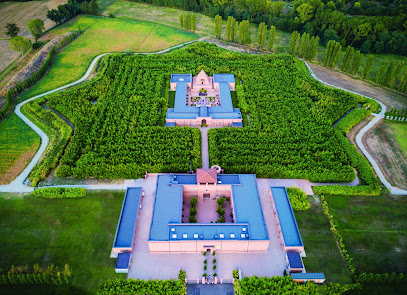
Palazzo della Pilotta
Discover the artistic and archaeological treasures of Palazzo della Pilotta, a cultural landmark in the heart of Parma, Italy.

Cittadella Park
Discover the serene beauty of Cittadella Park in Parma, where nature meets history in a tranquil urban oasis perfect for relaxation and exploration.
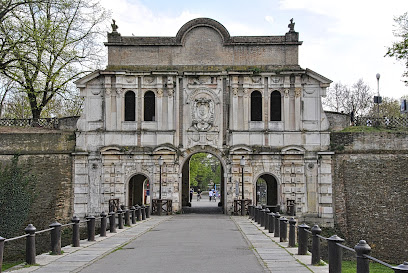
Parco Ducale
Explore Parco Ducale, a serene city park in Parma, Italy, featuring beautiful landscapes, charming monuments, and a picturesque lake for ultimate relaxation.
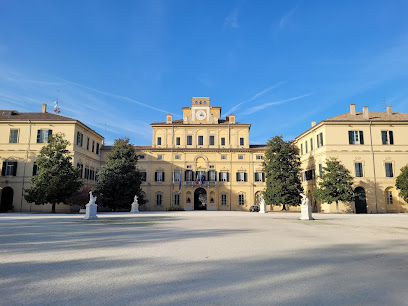
Teatro Regio
Discover the stunning Teatro Regio in Parma, an opera house that showcases breathtaking performances and a rich cultural heritage.
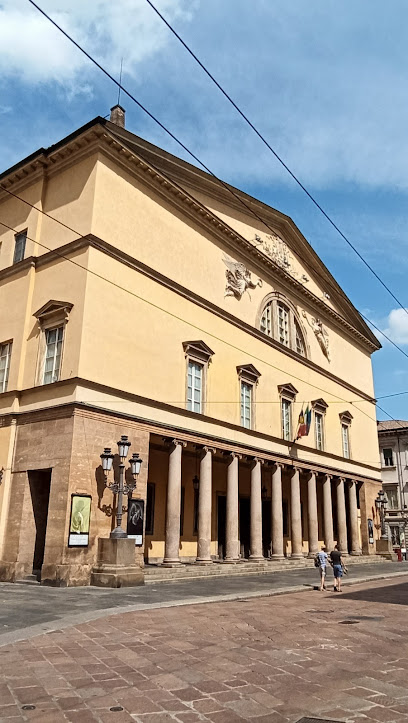
Teatro Farnese
Discover the breathtaking beauty of Teatro Farnese, a historical performing arts theater in Parma, Italy, and a masterpiece of architectural elegance.
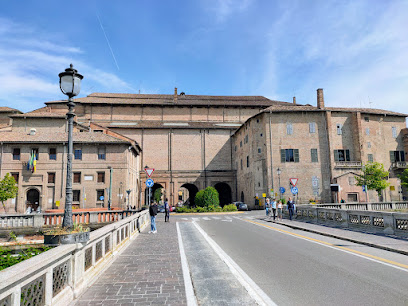
Piazza della Pace
Discover the tranquil charm of Piazza della Pace in Parma, where history, architecture, and culture converge in a picturesque Italian square.

Governor's Palace
Discover the majestic Governor's Palace in Parma, a historical landmark showcasing Renaissance and Baroque architecture in a vibrant cultural setting.
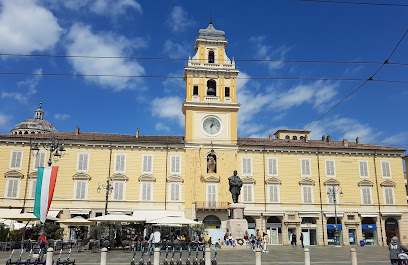
Giuseppe Garibaldi Monument
Explore the Giuseppe Garibaldi Monument in Parma, a stunning tribute to Italian unification amid vibrant local culture and history.
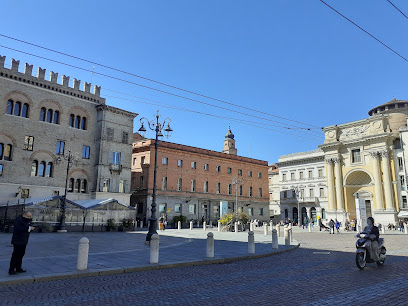
Basilica di Santa Maria della Steccata
Explore the architectural wonder and serene ambiance of Basilica di Santa Maria della Steccata, a must-see sanctuary in the heart of Parma.
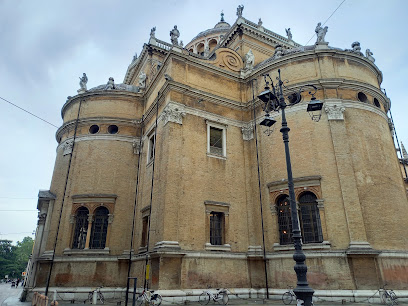
Degusteria - Silvano Romani
Experience the authentic flavors of Northern Italy at Degusteria - Silvano Romani, a culinary gem in the heart of Parma, Italy.
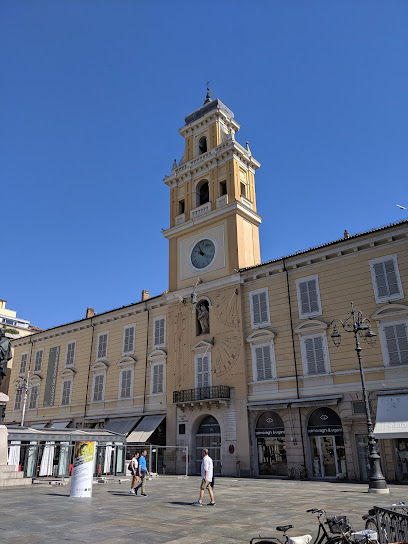
Unmissable attractions to see
Cattedrale di Parma
Explore the Cattedrale di Parma, a Romanesque marvel featuring stunning frescoes and rich history at the heart of Parma's cultural heritage.
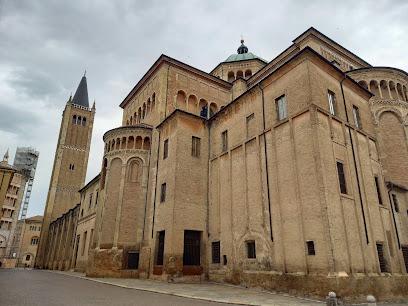
Rocca Sanvitale
Explore Rocca Sanvitale in Fontanellato: a stunning medieval castle rich in art and history, offering a unique glimpse into Italy's cultural heritage.
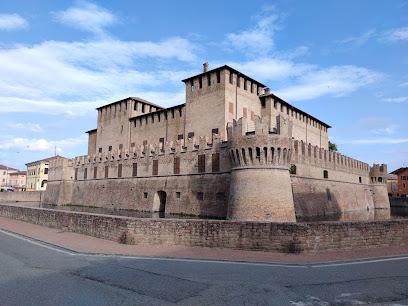
Castello di Torrechiara
Discover the enchanting Castello di Torrechiara, a medieval treasure in the heart of Parma, blending history with breathtaking landscapes.

Labirinto della Masone
Discover the enchanting Labirinto della Masone, an open-air museum blending art, nature, and the world's largest bamboo labyrinth in Fontanellato, Italy.
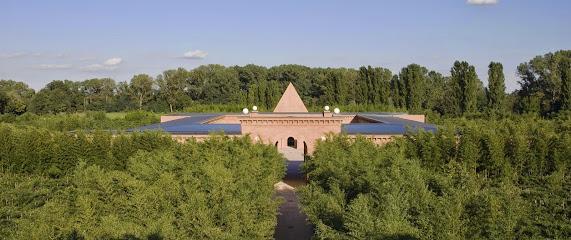
Ducal Palace
Explore the majestic Ducal Palace in Colorno, a Baroque masterpiece rich in history, stunning architecture, and beautiful gardens.
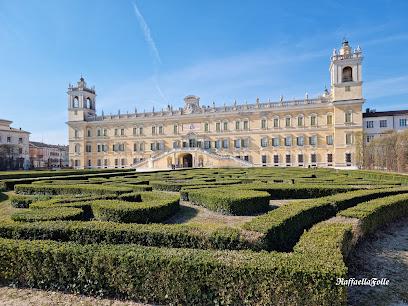
Palazzo della Pilotta
Explore the rich heritage and stunning art of Palazzo della Pilotta, a cultural gem in the heart of Parma, Italy.
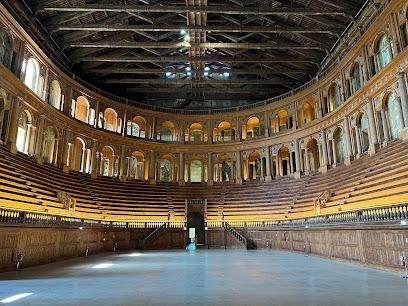
Cattedrale di Santa Maria Assunta
Discover the architectural beauty and historical significance of the Cattedrale di Santa Maria Assunta in Cremona, Italy.
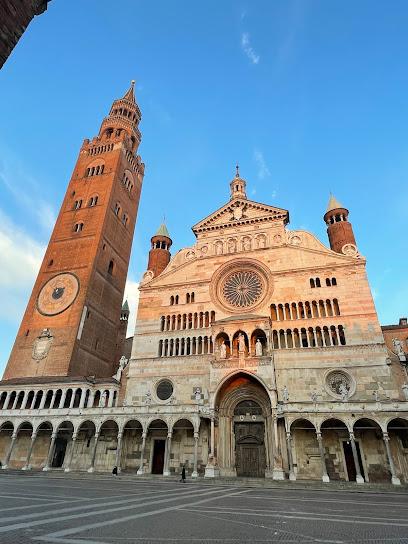
Cittadella Park
Explore Cittadella Park, a lush urban retreat in Parma, blending history, nature, and recreational activities for a perfect day out.
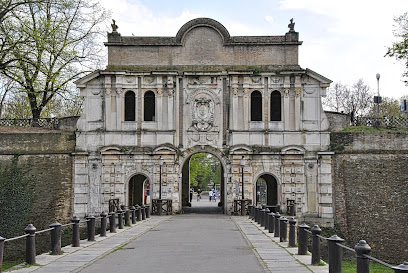
Parco Ducale
Explore Parco Ducale, a serene city park in Parma, Italy, featuring lush landscapes, historical architecture, and cultural events for a perfect day out.
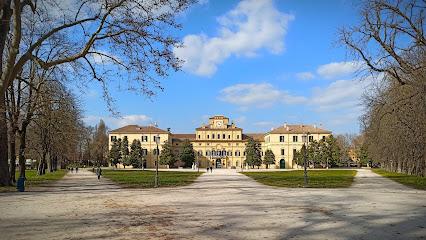
Teatro Regio
Experience the enchanting world of opera at Teatro Regio, a historic performing arts theater in the heart of Parma, Italy.

Museo del Violino
Explore the fascinating world of string instruments at the Museo del Violino in Cremona, a must-visit for music enthusiasts and culture seekers.

Castello di Formigine
Explore the historical marvel of Castello di Formigine, a medieval castle nestled in the charming town of Formigine, Italy, offering breathtaking views and rich heritage.
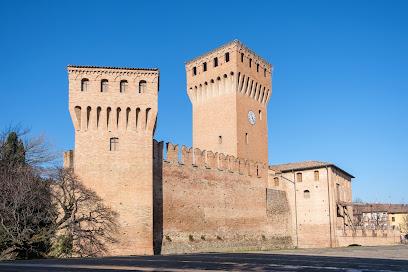
Autodromo di Modena Srl
Discover the adrenaline-fueled world of motorsport at Autodromo di Modena, where speed meets excitement in a stunning Italian setting.
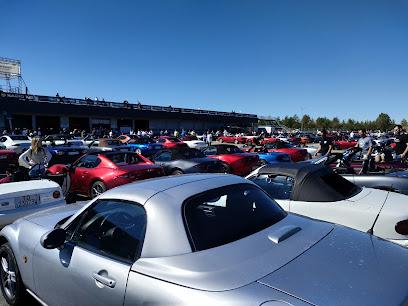
Farnese Theater
Explore the enchanting Farnese Theater in Parma, a historic Renaissance gem that offers unforgettable performances and stunning architecture.
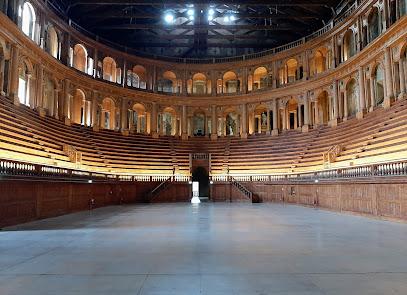
Galleria Estense
Discover the artistic heritage of Modena at Galleria Estense, home to extraordinary Renaissance and Baroque masterpieces in a stunning historic setting.

Essential places to dine
Trattoria Corrieri
Experience authentic Italian cuisine at Trattoria Corrieri in Parma – where tradition meets flavor in every dish.
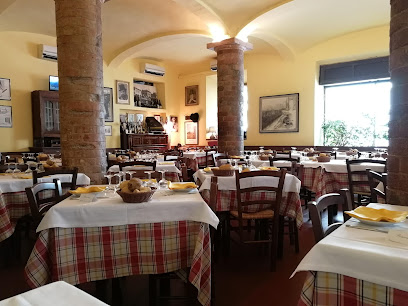
Trattoria Del Tribunale
Experience authentic Italian cuisine at Trattoria Del Tribunale in Parma - where tradition meets taste.
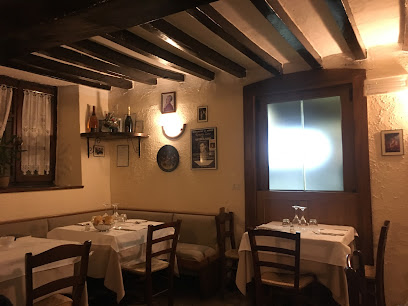
I Tri Siochett - Ristorante Trattoria
Discover the essence of Italian gastronomy at I Tri Siochett - Ristorante Trattoria in Parma, where tradition meets flavor.
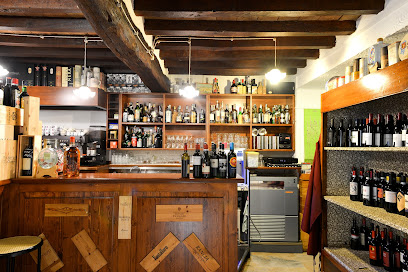
Osteria dei Servi
Experience authentic Italian cuisine at Osteria dei Servi in Parma - where tradition meets flavor in every dish.
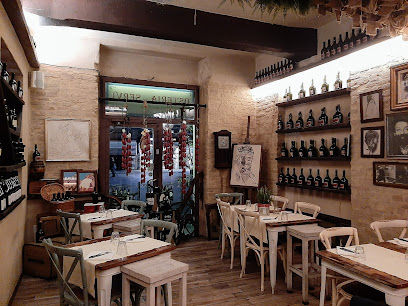
Ristorante Gallo d'Oro
Experience authentic Italian cuisine at Ristorante Gallo d'Oro in Parma – where tradition meets gourmet excellence.
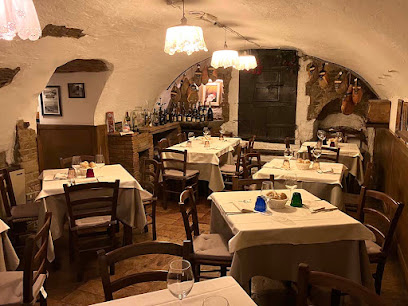
Ritual
Discover Ritual in Parma for an authentic taste of Mexican and Argentinian cuisine in a lively atmosphere.

Sorelle Picchi
Discover Sorelle Picchi: An elegant restaurant in Parma serving authentic Italian cuisine and exquisite wines amidst charming surroundings.
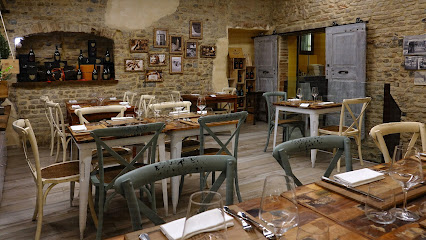
Ristorante Cocchi - Trattoria Tipica Parmigiana dal 1925
Experience authentic Parmigiana cuisine at Ristorante Cocchi - a culinary landmark in Parma since 1925.
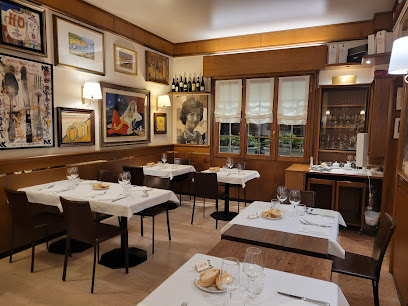
Ristorante La Forchetta
Experience authentic Italian cuisine at Ristorante La Forchetta in Parma - where tradition meets flavor.
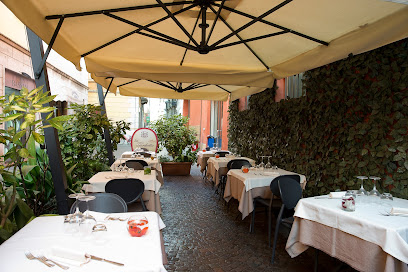
Risotteria dai C'andema PARMA
Experience the authentic taste of Italy at Risotteria dai C'andema, where every risotto tells a story of tradition and flavor.
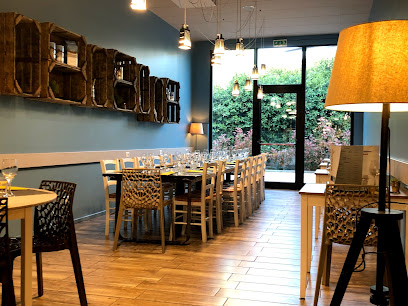
Ristorante Angiol d'Or
Discover authentic Italian flavors at Ristorante Angiol d'Or in Parma - a culinary journey through Italy's finest dishes awaits.
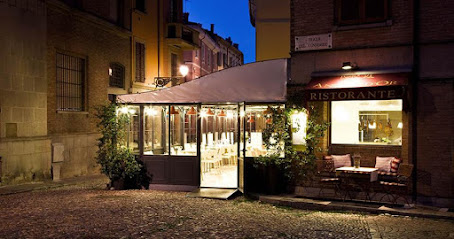
Degusteria - Silvano Romani
Experience authentic Northern Italian cuisine at Degusteria - Silvano Romani in Parma, where tradition meets flavor for an unforgettable dining experience.
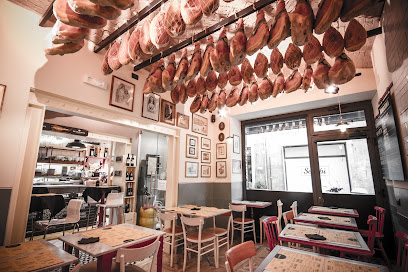
Ristorante La Greppia
Discover authentic Italian cuisine at Ristorante La Greppia in Parma – where every dish tells a story.
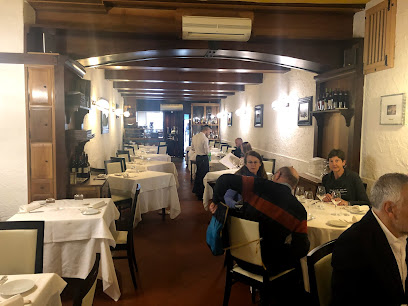
Ristorante Parma Rotta
Discover authentic Italian cuisine at Ristorante Parma Rotta, where tradition meets elegance in every dish.
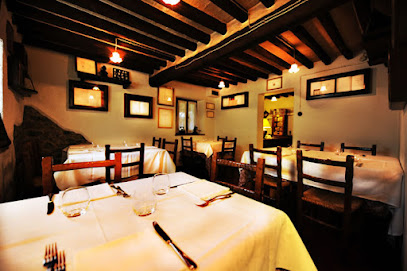
Antica Osteria della Ghiaia
Experience authentic Italian cuisine in Parma at Antica Osteria della Ghiaia - where tradition meets taste in every bite.

Markets, malls and hidden boutiques
La Galleria
Discover La Galleria in Parma, a vibrant shopping mall offering everything from outlet stores to supermarkets, perfect for all your retail needs.
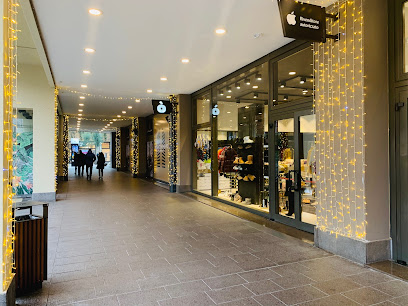
Flying Tiger Copenhagen
Discover unique gifts and playful home goods at Flying Tiger Copenhagen in Parma, a vibrant shopping spot filled with delightful surprises.
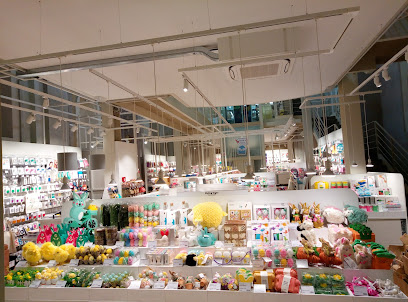
COINCASA
Explore COINCASA in Parma for stylish gifts, elegant furniture, and exquisite home goods that capture the essence of Italian design.
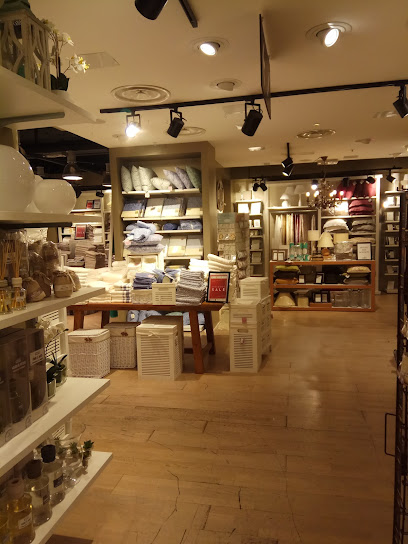
Alternative Shop
Explore the vibrant world of skateboarding and fashion at Alternative Shop, the ultimate skate shop in Parma, offering top-notch gear and stylish apparel.
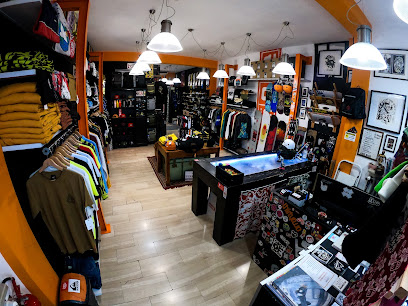
Dusted Shop
Discover unique Italian fashion at Dusted Shop in Parma—where style meets culture and every item tells a story.
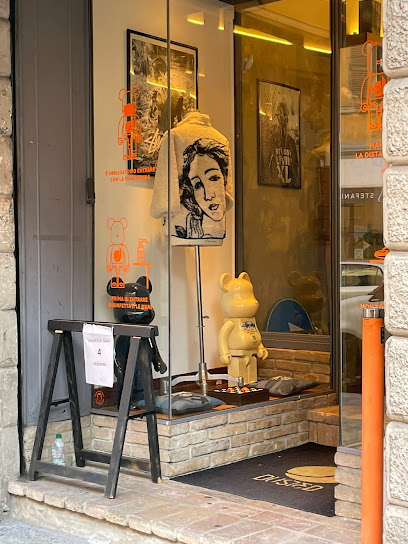
Settebì Abbigliamento e Accessori
Explore the chic and stylish world of Settebì Abbigliamento e Accessori in Parma, where Italian fashion meets exceptional quality and personalized service.
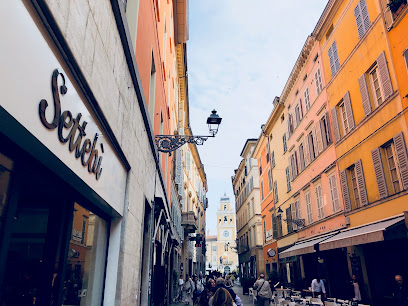
OBLIO Parma
Explore OBLIO Parma for the latest in sportswear, dresses, and shoes, blending style and functionality in the heart of Italy.
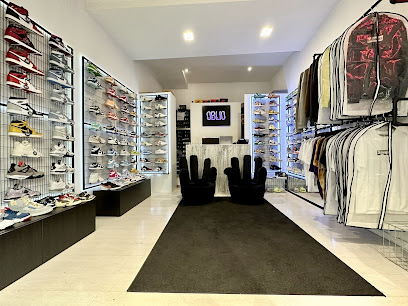
ParmaShop
Explore the rich culinary heritage of Parma at ParmaShop, your go-to destination for local cheeses, ham, and exquisite wines.
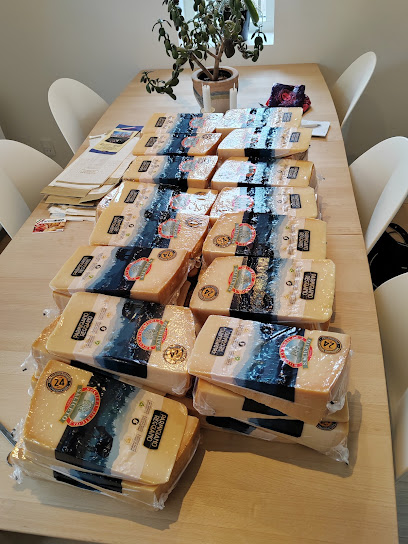
OLUXURY Parma
Explore OLUXURY Parma for an exquisite selection of high-end fashion and accessories in the heart of Italy.
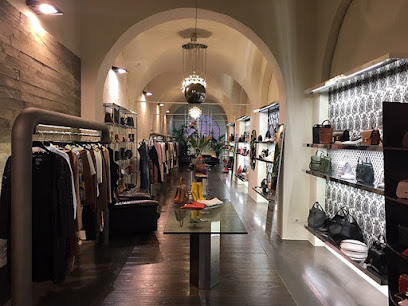
La Voglio Cosi - Borse e Vintage di Lusso
Discover exquisite luxury vintage leather goods at La Voglio Cosi in Parma, where timeless elegance meets charming Italian flair.
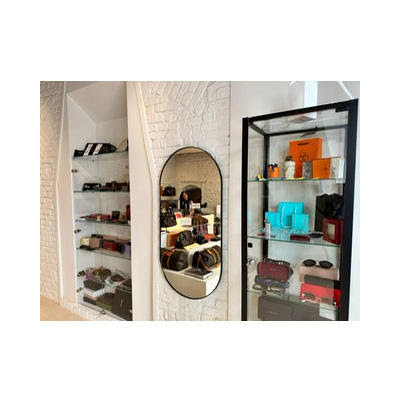
Store 333 (Abbigliamento)
Explore Store 333 in Parma for an exquisite selection of Italian fashion, showcasing local styles and unique designs in a charming boutique setting.
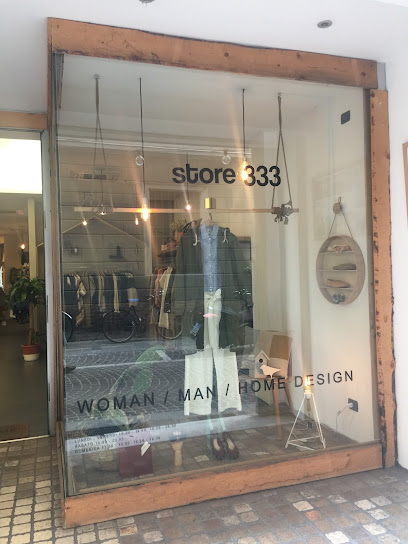
Piazza Duomo Abbigliamento
Explore the exquisite world of fashion at Piazza Duomo Abbigliamento, where style meets elegance in the heart of Parma.

Pinko Boutique Parma
Explore Pinko Boutique Parma for a unique blend of contemporary women's fashion and elegant accessories, right in the heart of Italy's stunning Parma.

Violetta Di Parma Borsari Negozio Storico
Experience the luxurious world of fragrances at Violetta Di Parma, where Italian craftsmanship meets exquisite scent.
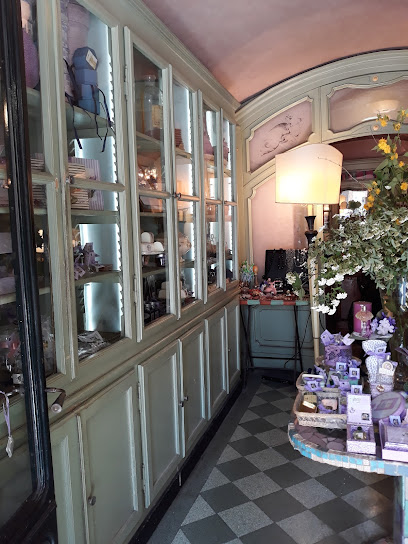
Parma Point - Souvenir Shop
Explore Parma Point for unique souvenirs and local crafts, capturing the essence of Parma's rich culture and artistry.

Essential bars & hidden hideouts
Gran Caffè Cavour
Discover the charm of Gran Caffè Cavour in Parma, where authentic Italian coffee and pastries meet a delightful café ambiance.

Bastian Contrario
Experience the lively atmosphere and local flavors at Bastian Contrario, a vibrant pub in the heart of Parma, perfect for a night out.
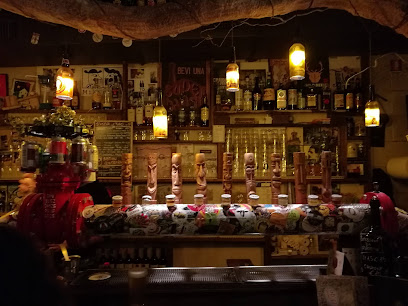
Peter Pan wine bar
Experience the best of Parma at Peter Pan Wine Bar, where quality coffee meets exquisite wines in a cozy atmosphere.

Evolution Bar
Experience the vibrant nightlife of Parma at Evolution Bar, a lively destination for cocktails, local wines, and unforgettable evenings.
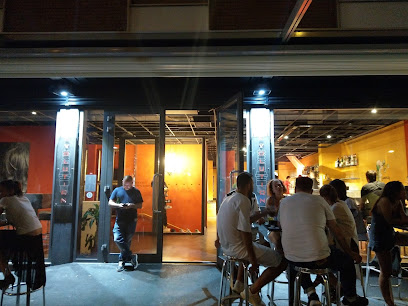
Jamaica
Discover Jamaica in Parma: a lively pub and dance club offering delicious pizza and unforgettable nightlife experiences.
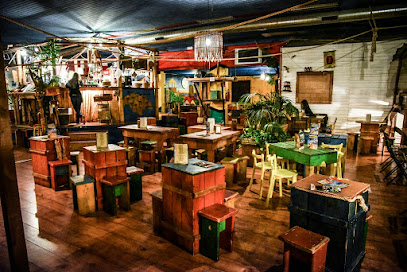
Vecchie Maniere
Discover the vibrant atmosphere of Vecchie Maniere, a charming pub in Parma known for its craft beers, tasty bites, and warm hospitality.
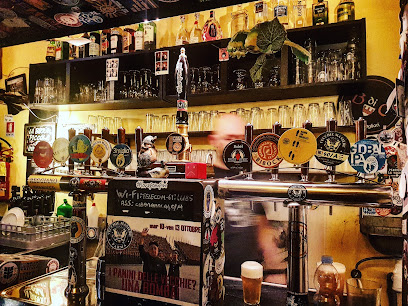
Highlander Pub
Highlander Pub in Parma offers a lively atmosphere with delicious food, a wide selection of craft beers, and unforgettable nightlife experiences.
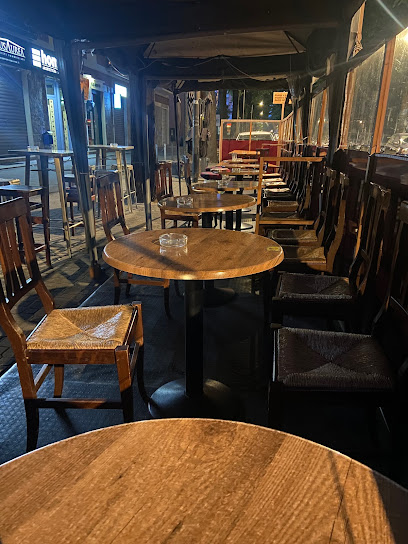
Tapas Pub Parma
Experience the vibrant flavors of Spain at Tapas Pub Parma, where every dish tells a story and every sip delights your senses.
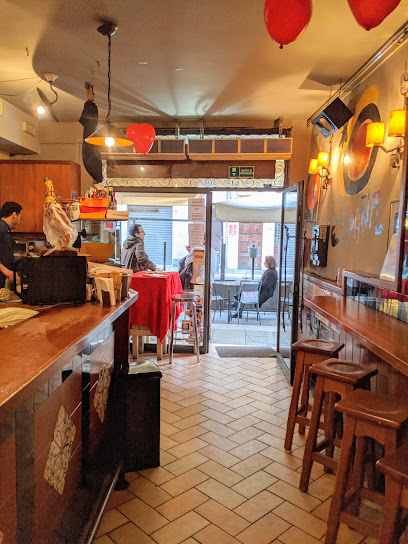
Bar Cocktails Ten
Experience the vibrant nightlife of Parma at Bar Cocktails Ten, where innovative cocktails and bistro delights await you.
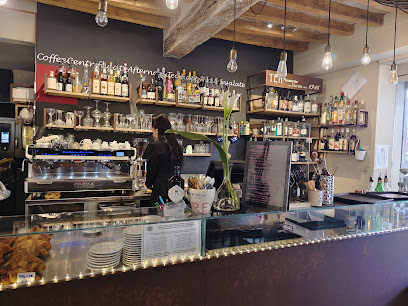
Plan B (Tiki Bar)
Experience the tropical vibes of Plan B Tiki Bar in Parma, where refreshing cocktails and a vibrant atmosphere await every visitor.
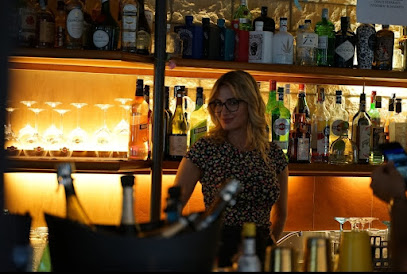
Pub Tonic
Discover the lively ambiance and extensive drink selection at Pub Tonic, a must-visit pub in the heart of Parma for every tourist.

Birreria Underground
Experience the lively atmosphere and craft beverages at Birreria Underground, Parma's hidden pub gem offering a taste of local nightlife.
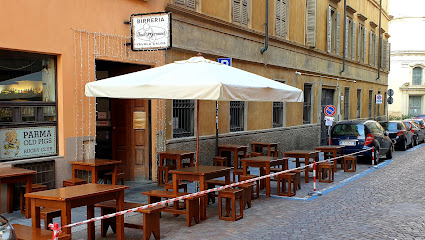
Cardinal Bar Srl
Discover the vibrant atmosphere and delightful drinks at Cardinal Bar, a must-visit destination in the heart of Parma, Italy.
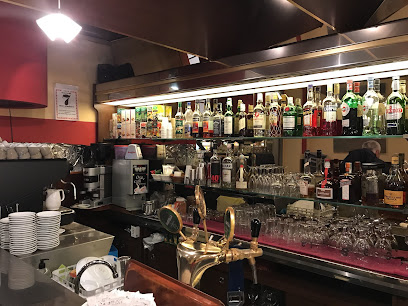
J. Roger Speakeasy
Discover the elegance of J. Roger Speakeasy, a premier cocktail bar in Parma, where exquisite drinks meet a charming ambiance.

Choice - Cocktail Bar
Discover the vibrant nightlife of Parma at Choice - Cocktail Bar, where unique cocktails and a lively atmosphere await every visitor.
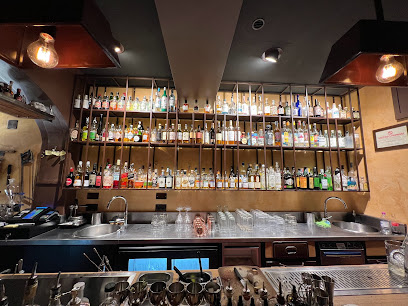
Travel experiences inspired by this city
Explore more travel diariesLocal Phrases
-
- HelloCiao
[chow] - GoodbyeArrivederci
[ah-ree-veh-dehr-chee] - YesSì
[see] - NoNo
[noh] - Please/You're welcomePer favore/Prego
[pair fah-voh-reh/preh-goh] - Thank youGrazie
[grah-tsyeh] - Excuse me/SorryMi scusi/Scusa
[mee skoo-zee/skoo-sah] - How are you?Come stai?
[koh-meh stah-ee] - Fine. And you?Bene. E tu?
[beh-neh. eh too] - Do you speak English?Parli inglese?
[pahr-lee een-gleh-zeh] - I don't understandNon capisco
[nohn kah-pee-skoh]
- HelloCiao
-
- I'd like to see the menu, pleaseVorrei vedere il menu, per favore
[vohr-ray veh-deh-reh eel meh-noo, pair fah-voh-reh] - I don't eat meatNon mangio carne
[nohn mahn-joh kahr-neh] - Cheers!Salute!
[sah-loo-teh] - I would like to pay, pleaseVorrei pagare, per favore
[vohr-ray pah-gah-reh, pair fah-voh-reh]
- I'd like to see the menu, pleaseVorrei vedere il menu, per favore
-
- Help!Aiuto!
[ah-yoo-toh] - Go away!Vai via!
[vah-ee vee-ah] - Call the Police!Chiama la polizia!
[kee-ah-mah lah poh-lee-tsyah] - Call a doctor!Chiama un medico!
[kee-ah-mah oon meh-dee-koh] - I'm lostMi sono perso
[mee soh-noh pehr-soh] - I'm illSto male
[stoh mah-leh]
- Help!Aiuto!
-
- I'd like to buy...Vorrei comprare...
[vohr-ray kohm-prah-reh] - I'm just lookingSto solo guardando
[stoh soh-loh gwahr-dahn-doh] - How much is it?Quanto costa?
[kwahn-toh koh-stah] - That's too expensiveÈ troppo caro
[eh troh-poh kah-roh] - Can you lower the price?Puoi abbassare il prezzo?
[pwoh-ee ahb-bahs-sah-reh eel preh-tsoh]
- I'd like to buy...Vorrei comprare...
-
- What time is it?Che ora è?
[keh oh-rah eh] - It's one o'clockÈ l'una
[eh loo-nah] - Half past (10)È mezza (dieci)
[eh meh-tsah (dyeh-chee)] - MorningMattina
[mah-ttee-nah] - AfternoonPomeriggio
[poh-meh-ree-joh] - EveningSera
[seh-rah] - YesterdayIeri
[yeh-ree] - TodayOggi
[oh-jee] - TomorrowDomani
[doh-mah-nee] - 1Uno
[oo-noh] - 2Due
[doo-eh] - 3Tre
[treh] - 4Quattro
[kwah-troh] - 5Cinque
[cheen-kweh] - 6Sei
[say] - 7Sette
[seh-tteh] - 8Otto
[oh-ttoh] - 9Nove
[noh-veh] - 10Dieci
[dyeh-chee]
- What time is it?Che ora è?
-
- Where's a/the...?Dov'è un/il...?
[doh-veh oon/eel] - What's the address?Qual è l'indirizzo?
[kwahl eh leen-dee-reet-soh] - Can you show me (on the map)?Puoi mostrarmi (sulla mappa)?
[pwoh-ee mohs-trahr-mee (sool-lah mahp-pah)] - When's the next (bus)?Quando passa il prossimo (autobus)?
[kwahn-doh pahs-sah eel prohs-see-moh (ow-toh-boos)] - A ticket (to ....)Un biglietto (per ....)
[oon beel-lyeh-toh (pair)]
- Where's a/the...?Dov'è un/il...?
History of Parma
-
Parma was originally founded by the Romans in 183 BC as a colonia. It became an important hub within the Roman road network, connecting the Via Aemilia, which ran from Piacenza to Rimini. The city served as a strategic military outpost and developed into a flourishing market town.
-
During the Middle Ages, Parma became a significant center of power and culture in northern Italy. The construction of the Parma Cathedral, started in the 11th century, symbolizes this era. The city was a battleground for control between various noble families and was intermittently ruled by the Papacy and the Holy Roman Empire.
-
In 1545, Pope Paul III established the Duchy of Parma and Piacenza and appointed his illegitimate son, Pier Luigi Farnese, as its first duke. The Farnese family ruled Parma for nearly two centuries, transforming it into a cultural and political hub. The stunning Palazzo della Pilotta, now housing several museums, was built during this period.
-
In the early 19th century, Parma fell under the control of Napoleon Bonaparte, who installed his wife, Marie Louise, as the Duchess of Parma. Her rule from 1816 to 1847 was marked by significant advancements in infrastructure, education, and the arts, leaving a lasting impact on the city's development.
-
The mid-19th century saw Parma playing a role in the Risorgimento, the movement for the unification of Italy. The city was annexed to the Kingdom of Sardinia in 1860 and subsequently became part of the unified Kingdom of Italy in 1861. This period brought about significant modernization and integration into the new Italian state.
-
Parma has long been celebrated for its rich cultural heritage. The Teatro Regio, one of Italy's most prestigious opera houses, opened its doors in 1829. Additionally, the city is famous for its contributions to Italian cuisine, particularly Parmesan cheese and Parma ham, both of which have become symbols of Italian gastronomy worldwide.
-
Today, Parma is a vibrant city that seamlessly blends its historical legacy with contemporary life. It is home to the University of Parma, one of the oldest universities in the world, established in the 12th century. The city continues to thrive as a cultural and economic center, hosting numerous festivals, exhibitions, and events year-round.
Parma Essentials
-
Parma is well-connected by various modes of transportation. The nearest major international airport is Bologna Guglielmo Marconi Airport (BLQ), which is about 90 kilometers away. From the airport, you can take a direct train or bus to Parma. Alternatively, Milan Malpensa Airport (MXP) is another option, located about 180 kilometers away. Parma also has its own smaller airport, Giuseppe Verdi Airport (PMF), offering limited flights. Train travel is convenient, with Parma being a major stop on the Milan-Bologna railway line. Regular trains connect Parma to other major Italian cities.
-
Parma offers a reliable public transportation system, including buses and trains. The local bus network is operated by TEP and covers the city and surrounding areas. Tickets can be purchased at newsstands, tobacconists, or directly from the bus driver. For exploring the city center, walking or renting a bicycle are excellent options. Taxis are readily available, but be sure to use official taxis to avoid overcharging. Car rental services are also available for those wishing to explore the countryside at their own pace.
-
The official currency in Italy is the Euro (EUR). Credit and debit cards are widely accepted in hotels, restaurants, and shops. However, it is advisable to carry some cash, especially for smaller establishments and markets. ATMs are plentiful throughout Parma, and major banks offer currency exchange services. It is a good idea to inform your bank of your travel plans to avoid any issues with card transactions.
-
Parma is generally a safe city for tourists. However, like any other city, it is important to take standard precautions. Avoid poorly lit and isolated areas at night, and be mindful of your belongings in crowded places to prevent pickpocketing. While there are no specific high-crime neighborhoods targeting tourists, staying vigilant and aware of your surroundings is always a good practice.
-
In case of emergency, dial 112 for immediate assistance, which connects you to police, medical, and fire services. The local police station and several hospitals are available in Parma. It is recommended to have travel insurance that covers medical emergencies. Pharmacies are common and can provide over-the-counter medications for minor health issues.
-
Fashion: Do dress stylishly and modestly; Italians take pride in their appearance. Avoid overly casual or revealing clothing. Religion: Do respect local customs, especially in churches. Cover your shoulders and knees when entering religious sites. Public Transport: Do validate your ticket before boarding buses and trains. Don't forget to give up your seat to the elderly or pregnant women. Greetings: Do greet people with a handshake and maintain eye contact. A light kiss on both cheeks is common among acquaintances. Eating & Drinking: Do try to learn a few Italian phrases; locals appreciate the effort. Don’t rush through meals; dining is a leisurely experience.
-
To experience Parma like a local, visit local markets like the Mercato Albinelli to buy fresh produce and regional specialties. Enjoy a stroll through Parco Ducale or Parco Cittadella. Don’t miss out on trying Parma’s renowned culinary delights, such as Parmigiano-Reggiano cheese and Prosciutto di Parma. Engage with locals, who are often friendly and willing to share insights about the city’s history and culture. Attend a performance at the Teatro Regio, an iconic opera house, to immerse yourself in the local arts scene.
Trending Landmark in Parma
-
Cattedrale di Parma
-
Rocca Sanvitale
-
Fiere di Parma
-
Castle of Torrechiara
-
Labirinto della Masone
-
Palazzo della Pilotta
-
Cittadella Park
-
Parco Ducale
-
Teatro Regio
-
Teatro Farnese
-
Piazza della Pace
-
Governor's Palace
-
Giuseppe Garibaldi Monument
-
Basilica di Santa Maria della Steccata
-
Degusteria - Silvano Romani
Nearby Cities to Parma
-
Things To Do in Modena
-
Things To Do in Bologna
-
Things To Do in Verona
-
Things To Do in Cinque Terre
-
Things To Do in Lucca
-
Things To Do in Bergamo
-
Things To Do in Milan
-
Things To Do in Genoa
-
Things To Do in Pisa
-
Things To Do in Florence
-
Things To Do in Ravenna
-
Things To Do in San Gimignano
-
Things To Do in Venice
-
Things To Do in Lugano
-
Things To Do in Siena
















